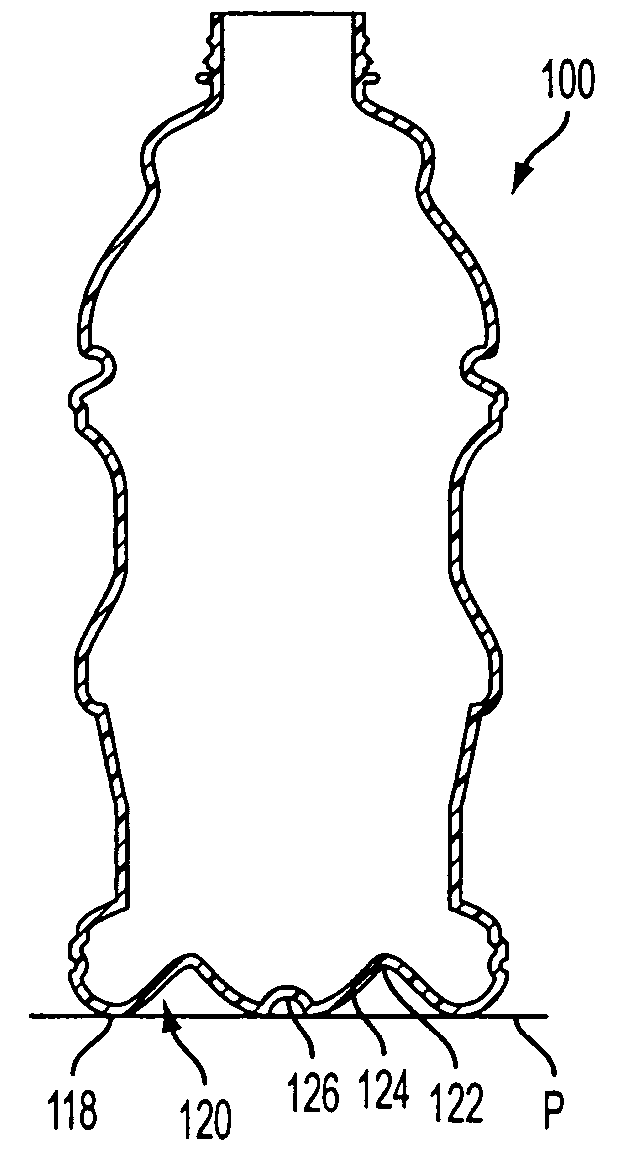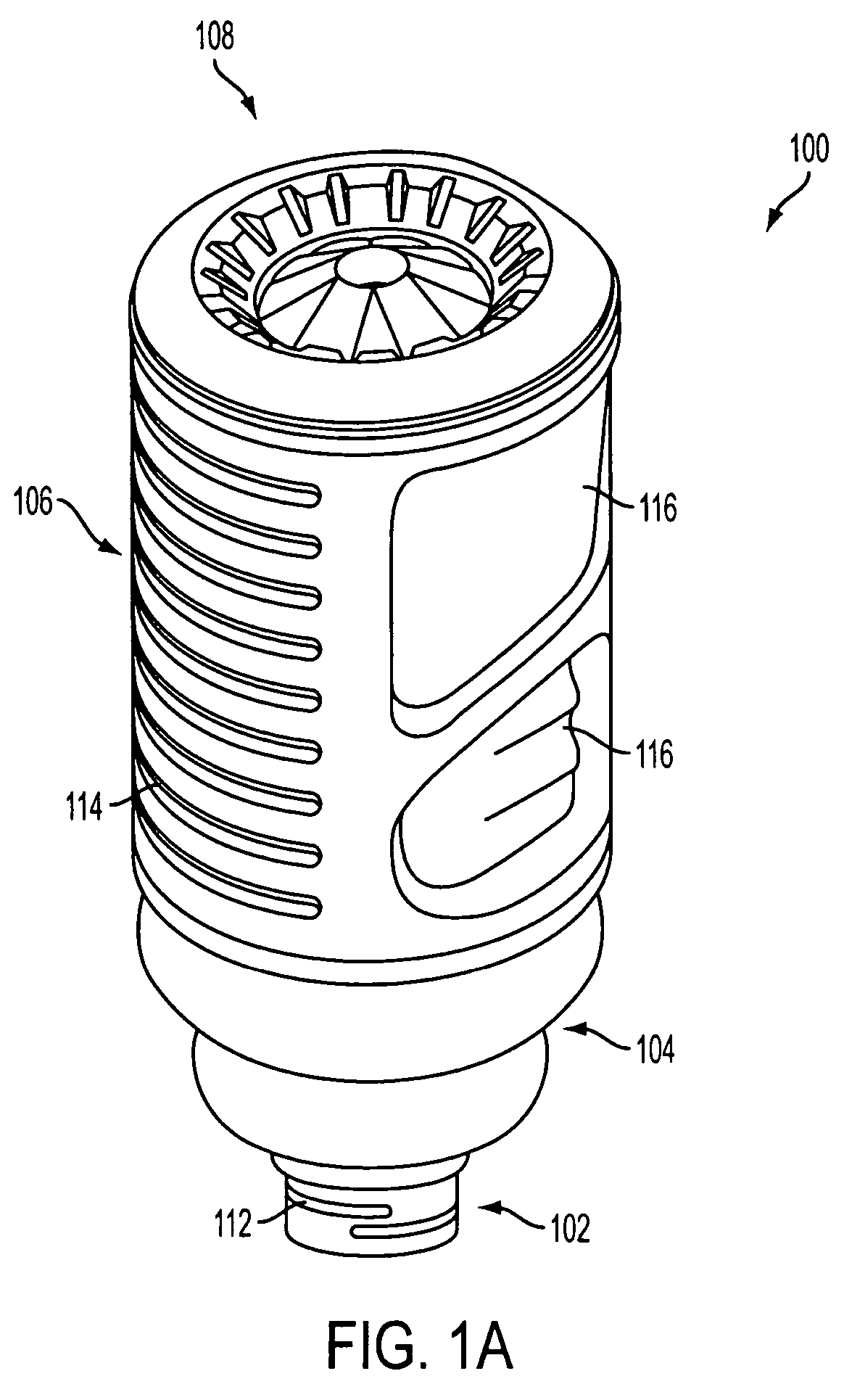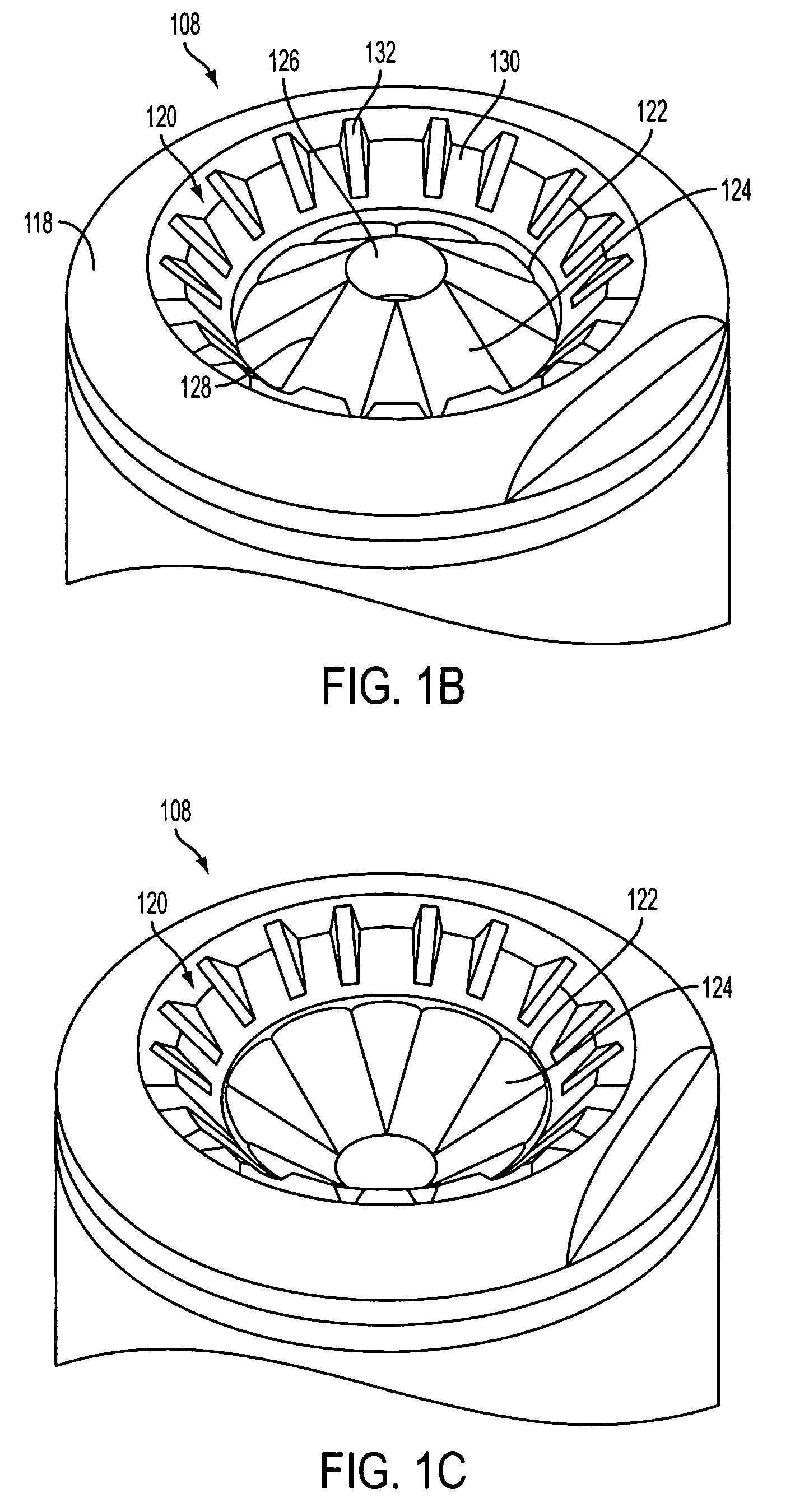Method for handling a hot-filled container having a moveable portion to reduce a portion of a vacuum created therein
a technology of hot-filled containers and moving parts, which is applied in the direction of liquid handling, applications, caps, etc., can solve the problems of partial vacuum within the container, container leaning or becoming unstable, and containers tend to deform and/or collapse, so as to reduce the internal pressure of the container
- Summary
- Abstract
- Description
- Claims
- Application Information
AI Technical Summary
Benefits of technology
Problems solved by technology
Method used
Image
Examples
Embodiment Construction
[0019]Embodiments of the invention are discussed in detail below. In describing embodiments, specific terminology is employed for the sake of clarity. However, the invention is not intended to be limited to the specific terminology so selected. While specific exemplary embodiments are discussed, it should be understood that this is done for illustration purposes only. A person skilled in the relevant art will recognize that other components and configurations can be used without parting from the spirit and scope of the invention.
[0020]The present invention generally relates to a base structure of a container that can be repositioned about a hinge to partially reduce an internal vacuum pressure within the container caused by cooling of a product after a hot fill process. FIGS. 1A-1C illustrate an exemplary embodiment of a container 100 having a base structure according to the present invention. Initially, the invention will be described referring to FIGS. 1A-1C.
[0021]According to an ...
PUM
| Property | Measurement | Unit |
|---|---|---|
| temperature | aaaaa | aaaaa |
| vacuum | aaaaa | aaaaa |
| force | aaaaa | aaaaa |
Abstract
Description
Claims
Application Information
 Login to View More
Login to View More - R&D
- Intellectual Property
- Life Sciences
- Materials
- Tech Scout
- Unparalleled Data Quality
- Higher Quality Content
- 60% Fewer Hallucinations
Browse by: Latest US Patents, China's latest patents, Technical Efficacy Thesaurus, Application Domain, Technology Topic, Popular Technical Reports.
© 2025 PatSnap. All rights reserved.Legal|Privacy policy|Modern Slavery Act Transparency Statement|Sitemap|About US| Contact US: help@patsnap.com



